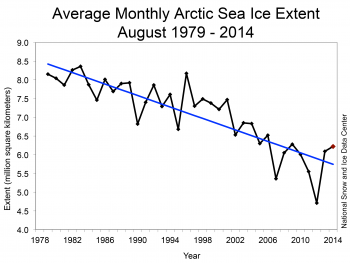Janus58 is able to tell if I am on to something or not - hope he is reading, but have not seen him posting recently.
SUMMARY: I'm no expert like Janus58 is, but it does seem like I have found below why the 60 year MDV cycle exits. If so, humans have about 60 years more before CO2, and the peak of the next MDV cycle lead to extinction (via 35C wet bulb). I have said all along that Guy MaPhersion was basically correct, but has extinction to0 soon - by about 35 years, it seems. (I did not edit out my first stupidity - let it all hang out so you can see my "mental evolution.")
Graph below from your second link is good summary of your first link, which appears to me to be a careful and valid analysis (assuming the data used is).
There does seem to be a significant MDV oscillation with approximately a 62 year period. I have only an unconfirmed guess as to what is the cause of the MDV (Multi-Decade-Variation). But will try to see if Mars and Jupiter do align with that period to maximally distort earth's orbit with that period - modulate Earth's eccentricity. - My first guess*, especially if they are on opposites sides of the sun 31 years after alignment.
The "secular trend" (red line) is accelerating upwards - no doubt in my mind that is mainly due to the annually increasing CO2 in the atmospheric. I doubt if the dip pre 1880 is real but it might be: Humans were increasing in numbers, building houses of wood and making furniture, boats, etc. from wood that in decades earlier would die and decay - more "sequestering" of CO2, but also were using it for more cooking and heating - hard to guess the net effect.
Anyway thanks for these links - I think on first reading quite important new, to me at least, idea.
By edit:
* PS my first thoughts were silly: Mars has a period (couple of earth years ?) much too short to be the effective 62 year conjunction.
http://en.wikipedia.org/wiki/Conjunction_(astronomy) said:
In May 2000, in a very rare event, several planets lay in the vicinity of the Sun in the sky as seen from the Earth, and a series of conjunctions took place. Jupiter, Mercury and Saturn each reached conjunction with the Sun in the period 8-10 May. These three planets in turn were in conjunction with each other and with Venus over a period of a few weeks. However, most of these conjunctions would not have been visible from the Earth because of the glare from the Sun.
That would effectively increase the solar attraction - slightly move earth closer to sun for a few years. I.e. agrees with the MDV increasing prior to May 2000 to its peak effect and beginning to decrease afterwards. - Perfect agreement with the green curve's peak! But Mercury is small and with short year so just makes tiny wiggles of short term their SST analysis would not even notice.
I was only guessing that Mars being closer to Earth would have the more important conjunctions with Jupiter than Saturn. need to do the calcualtion. Perhaps it is the Jupiter/ Saturn conjunction that has a 62 year period? Also I or some one needs to process the effect that 6 months later the pull of Jupiter and Saturn effectively weakens the solar attraction - I.e. this also distorts Earth's eccentricity; however, note also that 6 months is the period of the shift from summer to winter and most of their data probably came from the N. Hemisphere. Doing this correctly is quite complex. - Perhaps a new thread is required?
Surely someone good at searching (I'm not) can find it all worked out in the astronomical literature how the other planet moducate Earths ecentricity - and Solar Intensity at on Earth. - Satellite have not been measuring that accurately for 62 years I guess.
By second edit:
A drawing by Kepler in 1606. Note that the Jupiter/Saturn conjunctions (which occur about every 20 years) do return to essentially the same point in the heavens about every 60 years. Perhaps with different locations in the ecliptic plane? Or more likely, I guess is only one of the three 120 degree apart conjunction is along the Earth's current eliptical long axis to have greatest modulation of Earth's eccentricity - largest effect.
Can anyone super impose Earth's major axis on this drawing? (I copied it from:
http://en.wikipedia.org/wiki/Great_conjunction)
They should redo their SST analyse to look for a 20 year periodicity also if it would not fall out naturally.
Third edit:
Earth is farthest from sun at start of July -at aphelion. but I don't know the zodiac signs, especially not back in Kepler's day and they may have changed (some even dropped or added I think). with help from wiki it seems that aphelion is much closer to the top of the three "great conjunctions" than the other two in above drawing. I. e. an exactly vertical major axis for earth in the above drawing, if zodiac was same then as now.
SUMMARY: I'm no expert like Janus58 is, but it does seem like I have found why the 60 year MDV cycle exits. If so, humans have about 60 years more before CO2, and the peak of the next MDV cycle lead to extinction (via 35C wet bulb). I have said all along that Guy MaPhersion was basically correct, but has extinction too soon - by about 35 years it seems.



